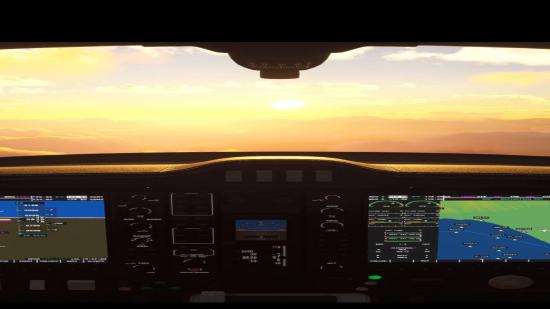In years past, flight sims have been intimidating pieces of software to learn – and that’s by design. Meant to be more than ‘mere’ plane games, the idea has been to provide as close to a real-world cockpit experience as possible, and that’s meant a broad array of controls, concepts, and indicator lights to learn. Microsoft wants to maintain that complexity in Microsoft Flight Simulator, but plans on making this next entry in the series accessible to anyone who wants to fly.
“‘Leave no pilot behind’ is our goal,” said Flight Simulator head Jorg Neumann, speaking to us on the floor at XO19 in London. “That means real pilots, it means simmers, and it means people who just have a dream of flight.”
That also includes people with disabilities, Neumann said. As part of Microsoft’s Games for Everyone – or G4E – program, the Flight Simulator team is conducting in-depth research on how to make their sim something that can accommodate potential pilots with physical or other impairments.
“We’re doing a bunch of research right now into people who can’t hear well, or can’t see. We have tests with people who have no eyesight at all,” he explained. “We want them to be able to fly.”
Microsoft’s Adaptive Controller is helpful in creating control schemes that are friendly to people with disabilities, but Neumann says Flight Simulator has been designed to be accessible to everyone out of the box on day one.

“If you want to fly, you should be able to fly,” he said. “Our lead designer is 100 percent focussed on that.”
Neumann said Microsoft has a team of behavioural scientists who analyze hand positions and track eye movement, all to understand how different people approach a sim and what draws their attention most effectively. The Flight Simulator team is also getting input from former military pilots who have lost eyesight, and they’re incorporating that feedback into creating an accessible design.
“Our goal is not to dumb down the sim,” Neumann said. “Our goal is to make the on-boarding to learn how to sim easier.”
Neumann said the goal is to have those accessibility features ready to go when Microsoft Flight Simulator launches next year.
